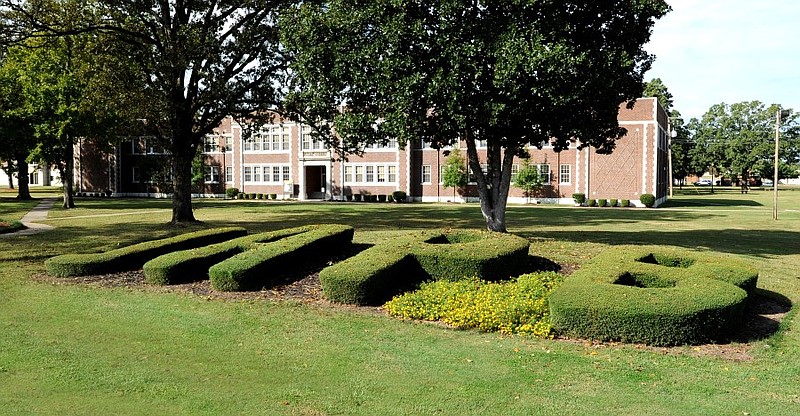While most colleges are seeing a decrease in fall enrollment, the University of Arkansas at Pine Bluff is experiencing the opposite.
On Thursday, UAPB reported a sharp increase in year-over-year enrollment of new and continuing students, including graduate, undergraduate, transfer, associate-to-bachelor degree and concurrent students.
Vice Chancellor Braque Talley said in a release that the 12% increase was the largest in nearly a decade and brings the preliminary 2020 fall enrollment total to more than 2,800 students.
"We have a 77% retention rate, which is the highest in the university's history," said Talley in a follow-up interview with the Pine Bluff Commercial.
The increased retention rate places the UAPB rate among the state's highest, a statistic that Talley points to with pride.
The university's response to the pandemic played a significant part in the increase in enrollment, according to Talley, who praised his team's commitment to following through on goals.
"We wanted to show that we were planted and not buried behind this pandemic," he said. "We increased our level of communication, levels of engagement and hosted lots of Zoom meetings with parents and students. We stayed committed to those goals and it paid off for us."
Student outcome has always been Talley's top priority, he said, and with a good team of thinkers and doers, he said the work was worth the effort.
"I applaud the collective efforts of our enrollment management division, faculty, academic advisers, success coaches and other staff and alumni who have worked diligently to increase the number of students reaching their academic goals, even in the midst of the coronavirus pandemic," he said.
Never disconnecting from their students, when the campus was forced to close abruptly in March, a team was immediately formed to keep the transparency and connection among the students, parents, faculty members and staff members.
"We did a number of wellness checks with our students throughout the summer to make sure they were doing OK throughout the pandemic," said Talley. "We did welfare checks to check on students from a mental standpoint and made sure they had food and things of that nature."
The university also used scholarship dollars to help students with their balances. For students who were struggling academically, "Supplemental Instruction," a tutoring program, was formed.
"We focus on providing tutoring for those classes," said Talley. "With the help of faculty and staff across campus and with the chancellor's leadership, it worked out for us."
Talley also credits The Design Group for its help constructing the university's communication plan.
"UAPB, along with our enrollment strategy partner, The Design Group, created a system based on data about our students' needs, and we expect to see increased gains in the semesters to come," said Talley. "This is our new floor, and we will only reach higher heights."
UAPB continues to improve its six-year graduation rate with the 2014 cohort that completed courses and graduated by the spring 2020 semester -- one that was significantly altered by the move to online classes because of the pandemic.
Since 2016, the six-year graduation rate has increased from 23.3% to 38.7%, an increase of 66%. About 75% of UAPB's classes are online.
Talley said that while there is still more the university can do to make improvements to the virtual experience, he is pleased with the combined efforts.
"While we modified our education delivery to offer students a virtual option this semester, we also deepened our commitment to ensuring every student has access to the technology and services that will help them excel," he said.
Campuswide, there are programs that provide proactive support to assist students in completing their degree programs. These programs include: the S.T.A.R. (or Students Taking Academic Responsibility), which utilizes individualized student learning plans; tutoring services; the summer early-access program; Learning Institute and Opportunities for New Students (LIONS) Program; student success coaches; the Senior Completion Program to financially assist undergraduates in their final year who have exhausted their financial aid or have experienced a financial setback; and the Pride Assist Program, which provides resources for students who are experiencing personal financial crises.
